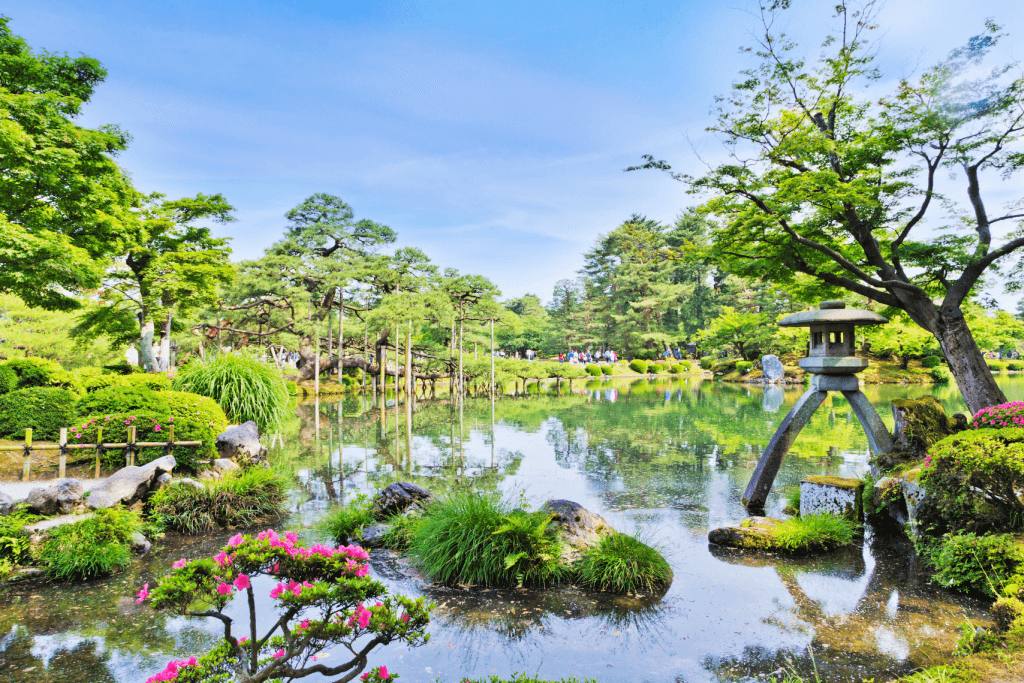With a history dating back centuries, public gardens in Japan offer visitors a glimpse into the country’s deep cultural roots. They are a must-see for anyone interested in exploring Japan’s natural beauty and history. Here are five parks across Japan you can check out this spring, just in time for the cherry blossoms.
Table of Contents
ToggleShinjuku Gyoen
Shinjuku Gyoen in Tokyo has an exciting history. It was a feudal lord’s house in the Edo era before becoming a botanical garden. Afterward, it became a residence of the Imperial family in 1903 before succumbing to fire bombings during World War II. Officials then rebuilt it in 1949 as the public park we know today.
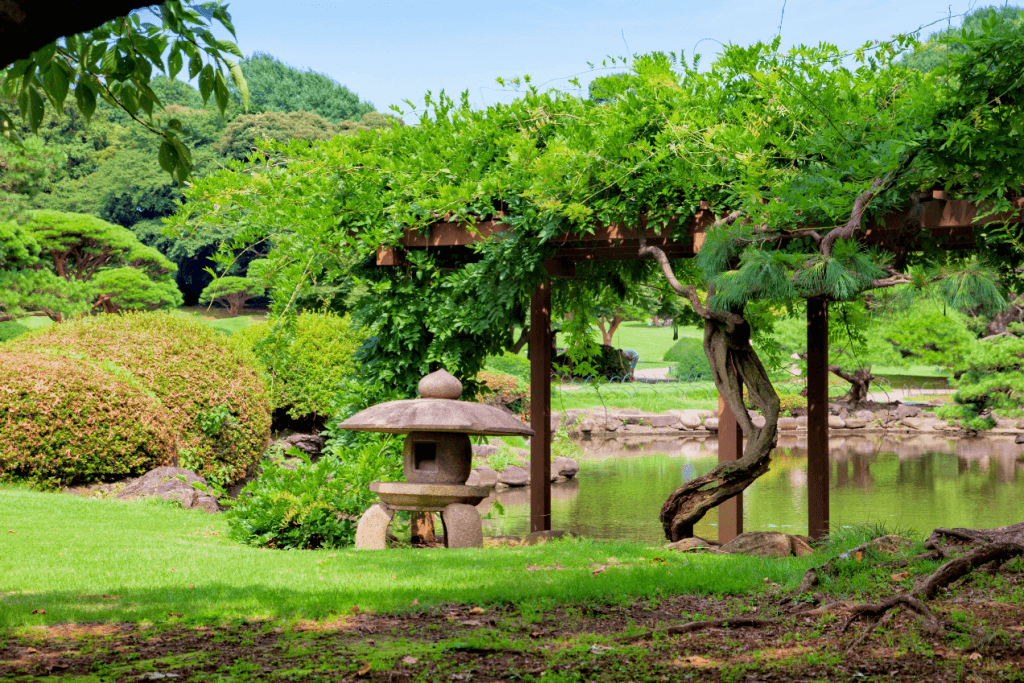
Its manicured English garden, symmetrical French garden, and traditional Japanese garden are trendy in Shinjuku. Especially in spring, visitors crowd around the more than 400 Somei Yoshino cherry trees. This public garden is only a few minutes from JR Shinjuku, JR Sendagaya, Shinjukugyoenmae, and Yoyogi stations. So be sure to arrive early in March and April to claim a spot for your hanami picnic. Entrance costs 500 yen, but walking along forested paths a few minutes from downtown Shinjuku is worth the price.
Korakuen
Korakuen in Okayama is another Japanese garden with a storied past. It has over 300 years of history, starting with its commissioning by a feudal lord in 1687. It was in operation for over 13 years before a typhoon, and a firebombing destroyed it in 1934 and 1945, respectively. The city of Okayama now manages it. Despite its misfortune, it still looks much as it did in the Edo period.
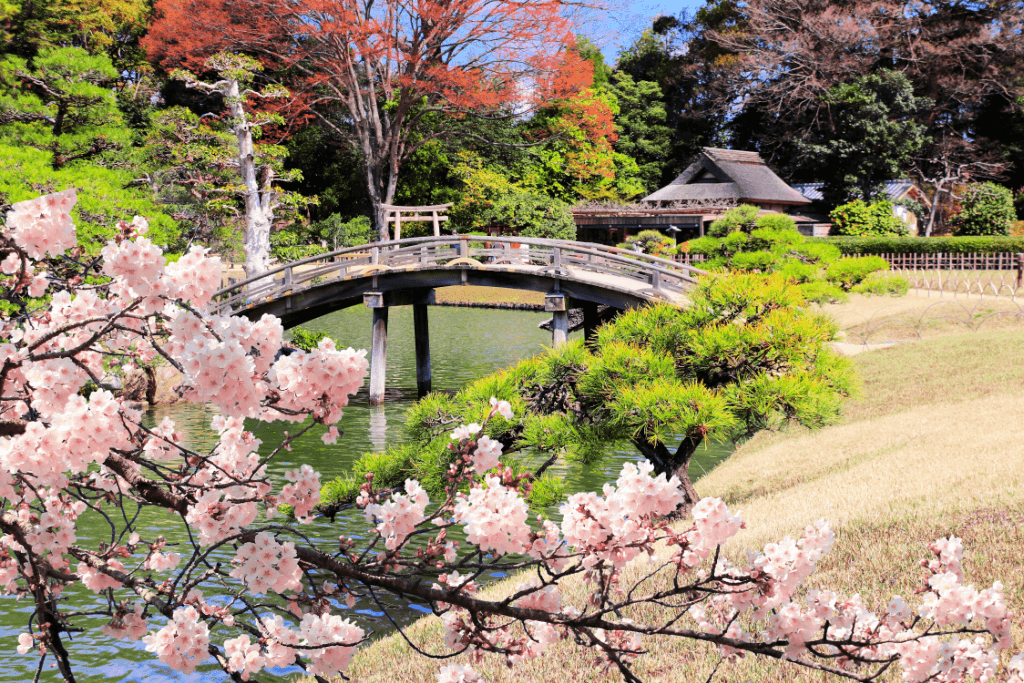
A moat crossed by bridges surrounds the entire park. The park contains Jizodo and Jigendo temples, a Noh theater where you can view public performances, and several ponds. From the north bank of the largest pond, Sawanoike, you can see Okayama Castle peeking above the park’s trees. Among them are numerous Somei Yoshino, Prunus jamasakura, and Prunus pendula cherry trees, which bloom from March to April. An aviary also contains resident Japanese cranes, which sometimes roam the grounds. It costs 410 yen to enter, but it’s worth the trip if you’re anywhere near Okayama.
Are you looking for artisanal snacks while strolling public gardens in the spring? Check out Sakuraco! Sakuraco delivers traditional Japanese snacks, teas, sweets, and snacks from Japan to your door every month so that you can enjoy Japan’s taste anywhere!
Kokedera
Sometimes referred to as “Saihoji,” this Unesco World Heritage Site in Kyoto is commonly known as the “Moss Temple” in English. The nickname comes from the famous moss garden surrounding Golden Pond on the park’s eastern side. The over 120 types of moss started growing naturally after a severe flood during the Edo era. You should plan your visit from June to July when the mosses are mainly green and lush during the rainy season.
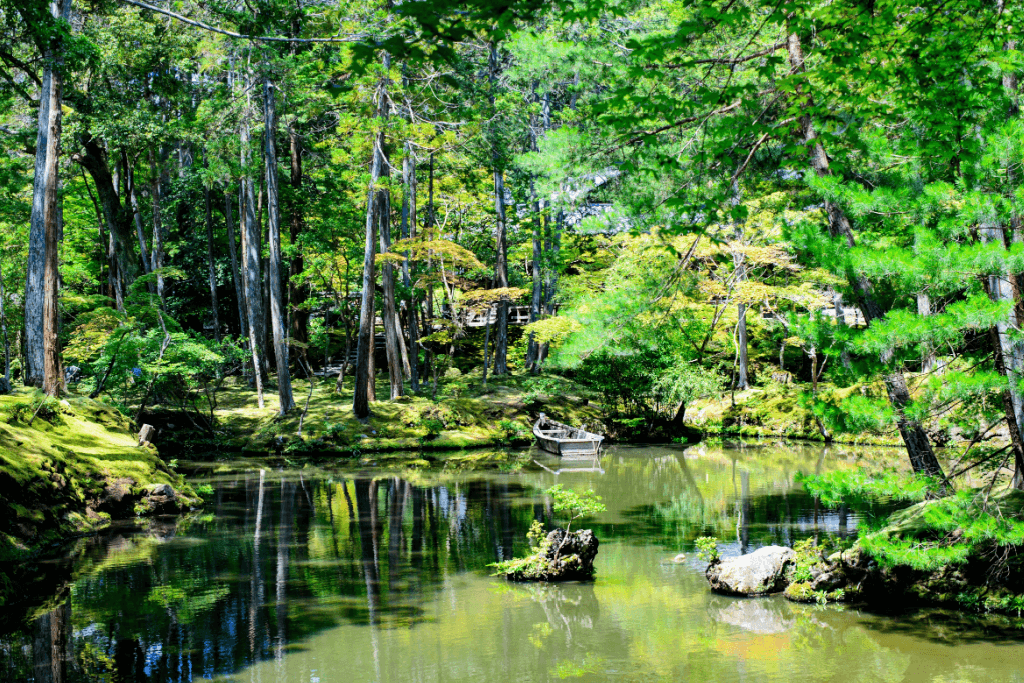
On the other hand, you can make your trip in the fall, when the red and orange leaves contrast sharply with the mossy green. This is one of the most expensive parks in Japan. Entrance costs 4000 yen, and visitors must show respect by copying a Buddhist scripture (sutra) before they can wander the grounds. The sutra can take over an hour to write, so plan accordingly.
Ashikaga Wisteria Park
Also known as “Ashikaga Flower Park,” this park in Tochigi has humbler and more recent beginnings. Ashikaga was a rural marshland in the 1920s when a lone Wisteria tree was planted in a garden. Over the years, the tree became a public attraction, so the residence was remodeled to accommodate visitors.
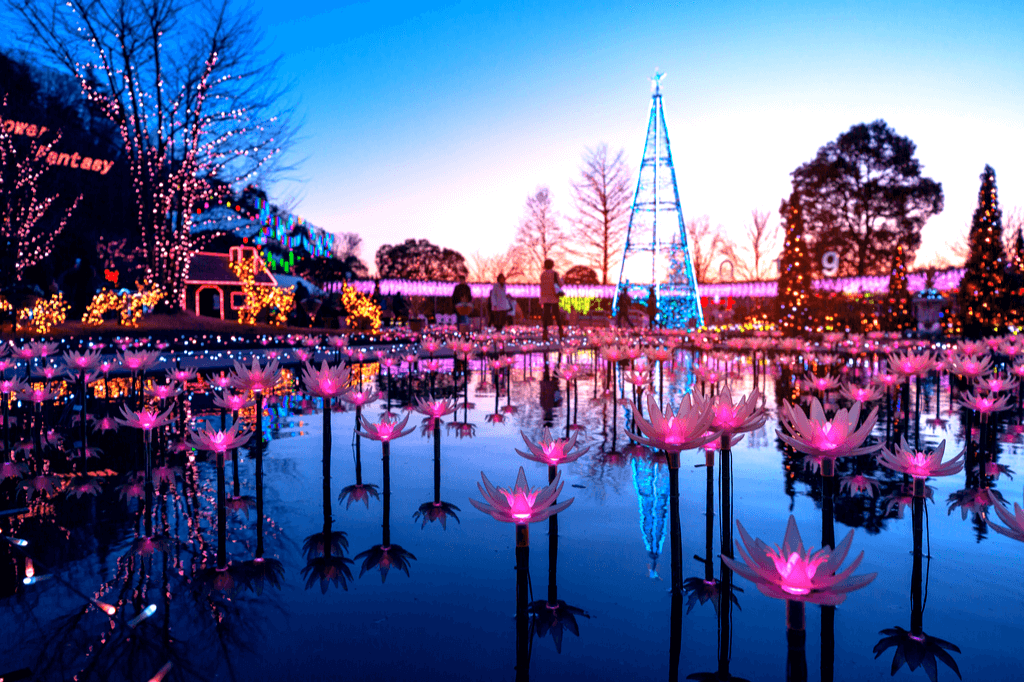
When Ashikaga became urbanized in the 1960s, the tree was moved to its present location to preserve it. The effort marked the first successful transplant of a fully grown Wisteria tree in Japan. The rare “double wisteria” tree still lives today and is more than 160 years old. It measured 72 square meters when planted on its trellis and has since grown to over 1000 square meters.
Today, the tree is known as “Sakanma Fujiis” and is a natural monument. “Ashikaga Flower Park” station was built in 2018 to accommodate the many visitors. Other Wisteria trees exist, but Sakanma Fujiis is the park’s most popular attraction. Mainly when five million LEDs illuminate the 100,000-meter square garden at yearly festivals. The entry fee varies between 500 and 1200 yen.
Suizenji Temple Garden
Suizenji Temple Garden is located on the southeast side of Kumamoto Castle grounds. The garden was originally a tea house built by a Japanese lord named Hosokawa Tadatoshi. Construction started in 1636 and was named “Suizenji” after a Buddhist temple in the garden at the time. The temple no longer exists, but Hosokawa is still buried on the grounds in Izumi Shrine.
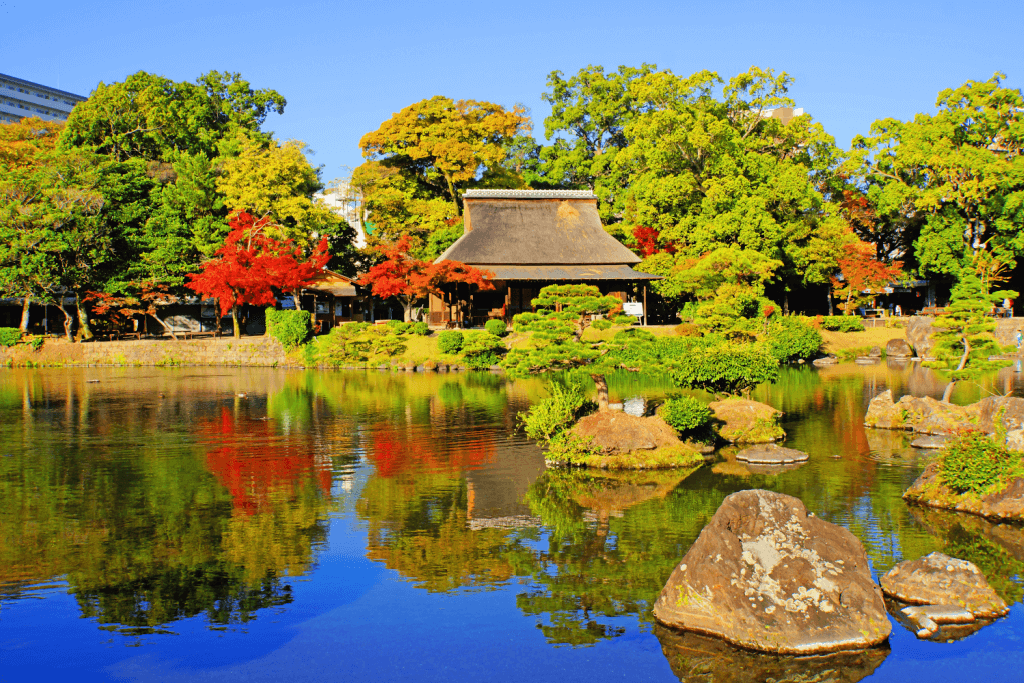
The most prominent feature is a miniature version of Mt. Fuji that rises from the well-tended lawns. There is also the Kaiyushiki Teien garden pond that collects water directly from Mount Aso. The two stone bridges at the entrance date back to the Meiji era. The garden hosts traditional spring and autumn horseback archery (yabusame) festivals. In summer, there are public Noh performances at night lit by torches. It costs 400 yen to enter the park, and it is open all year round.
Why should I go to these public gardens?
Exploring Japan’s public gardens is an excellent way to appreciate the country’s nature and history. They are convenient and inexpensive destinations that escape the hustle while learning about Japan’s heritage. You can contemplate a Zen garden or enjoy traditional performances. They offer the chance for an educational outdoor experience in a place that is pretty close to urban conveniences. Have you visited any of these public gardens before? How was your experience? If you have any suggestions for a public garden, please comment below!


